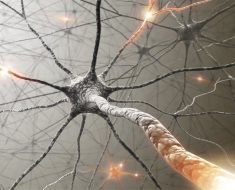Erectile dysfunction is known in common parlance as impotence. It signifies the inability to get and maintain an erection necessary for a satisfactory sexual intercourse. This is a fairly common condition and affects a large majority of men over 40.
This is not a life-threatening condition but may have a serious and significant impact on the quality of life of sufferers, partners and families. It is important that patients are properly assessed and investigated for underlying physical and psychological conditions before embarking on treatment.
Causes of impotence (erectile dysfunction)
Erectile dysfunction can occur due to several causes. These may be both physical and psychological.
Physical causes include narrowing of blood vessels of the penis due to long standing high blood pressure, high blood cholesterol or diabetes. Surgical or traumatic injury to the penis or hormonal problems may also cause erectile dysfunction.
Certain psychological causes such as depression, anxiety and problems in the relationships may also cause impotence of erectile dysfunction.
Risk factors of erectile dysfunction
Risk factors of erectile dysfunction include:
- obesity
- smoking
- high blood pressure
- high blood cholesterol
- lack of exercise
- diabetes
- metabolic syndrome
Erectile dysfunction epidemiology
Worldwide there is a high incidence (of new cases) and prevalence of this condition. Large number of men may not come forth with the condition and this means that the actual numbers may be even larger.
With the rise of diseases such as diabetes, high blood pressure and obesity the risk of this condition is also on the rise.
Erectile dysfunction is the most prevalent of the male sexual dysfunctions (prevalence age 30 to 80 years) at 19.2% as compared to 31% for all types of male sexual dysfunctions. There is a steep rise with age. The prevalence of complete impotence for example increases from 5% for men aged 40 years, to 15% for men aged 70 years. Studies show that 52% of men (aged 40 to 70 years) were affected at some time (mild 17%; moderate 25%; severe 10%) and 40% of men at age 40 may suffer some form of erectile dysfunction.
Of all sufferers about 10-20% of patients with erectile dysfunction have a solely psychogenic or psychological cause. However, even when a physical cause is present there may be added presence of psychological factors.
Diagnosis of erectile dysfunction
Erectile dysfunction needs to be assessed carefully for underlying problems – both physical, hormonal and psychological. A detailed history of impotence and physical examination helps in diagnosis of the condition.
Treatment of erectile dysfunction
The condition is primarily treated by treating the underlying physical or psychological problem. The commonest cause is narrowing of the arteries or atherosclerosis. Presence of risk factors mandate changes in lifestyle and adopting measures to keep blood pressure, sugar and cholesterol under control. Regular exercise, healthy diet, quitting smoking, maintaining healthy body weight etc. are some important measures.
There are several treatment options that have proved very successful. Medication, such as sildenafil (sold as Viagra), can be used to successfully manage it in at least two-thirds of men.
Other options include use of vacuum pumps that encourage blood to flow to the penis and help in the erection may be tried. There are several psychological treatments such as cognitive behavioural therapy (CBT) and sex therapy that have shown success.
Sources
- http://www.patient.co.uk/doctor/Erectile-Dysfunction.htm
- www.nhs.uk/conditions/Erectile-dysfunction/Pages/Introduction.aspx
- www.bbc.co.uk/…/erectile_dysfunction.shtml
- http://www.ncbi.nlm.nih.gov/books/NBK38721/
- kidney.niddk.nih.gov/kudiseases/pubs/ed/ErectileDysfunction_508.pdf
- http://www.uroweb.org/gls/pdf/Male%20Sexual%20Dysfunction%202010.pdf
- http://www.urologyhealth.org/content/moreinfo/edprimtreatment.pdf
Further Reading
- All Impotence Content
- Impotence (Erectile Dysfunction) Diagnosis
- Impotence (Erectile Dysfunction) Treatments
- Impotence (Erectile Dysfunction) History
- Impotence (Erectile Dysfunction) Symptoms
Last Updated: Jun 5, 2019

Written by
Dr. Ananya Mandal
Dr. Ananya Mandal is a doctor by profession, lecturer by vocation and a medical writer by passion. She specialized in Clinical Pharmacology after her bachelor's (MBBS). For her, health communication is not just writing complicated reviews for professionals but making medical knowledge understandable and available to the general public as well.
Source: Read Full Article





